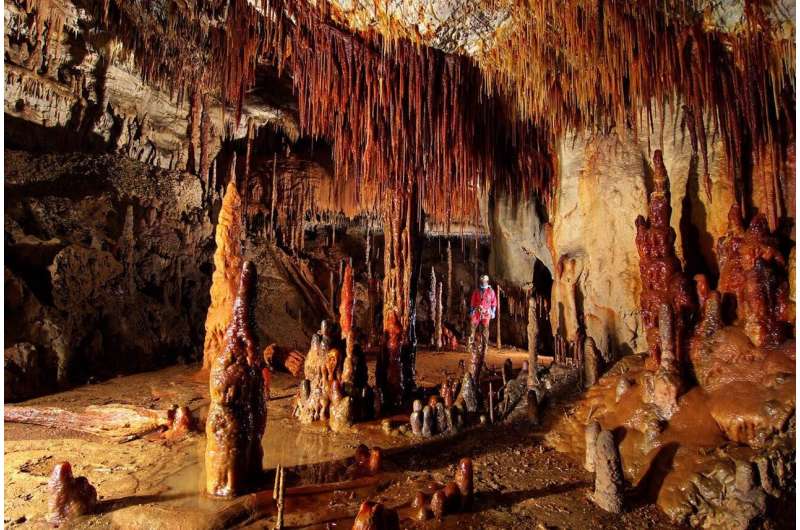Possible relationship between the red color of stalagmites and paleoclimatic changes

The CENIEH has participated in a study in which researchers used spectroscopic techniques to investigate the cause of the red coloration of stalagmites in Goikoetxe Cave and its possible status as an indicator of paleoclimatic changes in northern Spain.
As a general rule, the color red, both in geological and archaeological samples, is due to the presence of iron oxides, which stain minerals and rocks very intensely. Nevertheless, the analyses conducted in this work have shown that, in the case of the Goikoetxe stalagmites, the color is caused by the presence of organic substances derived from decomposition of the plant cover of the soils above the cavity.
"These organic substances, fundamentally humic and fulvic acids, are carried inside the cave by rainwater seeping through the rock, and for this to happen, there has to be a landscape with well-developed soils and thick plant cover, and relatively moist climatic conditions," explains Martínez-Pillado.
One of the collaborators was the Archaeometry Laboratory at the CENIEH, where Ana Álvaro and her team used two spectroscopic techniques, Raman and FTIR, to identify molecules and compounds. "These techniques have let us detect the presence of organic compounds derived from the degradation of plant material inside the stalagmites," says Ana Álvaro.
Moreover, using UV fluorescence measurements, the researchers identified different cycles related to the greater or lesser presence of organic compounds in the stalagmites and to changes in the environmental and climatic conditions outside the cavity. "These cycles, linked to the striking red color, have allowed us to embark on new investigations to reconstruct the climatic evolution of the Cantabrian coast between 5,000 and 7,000 years ago," concludes Martínez-Pillado.
The paper is titled "The red coloration of Goikoetxe Cave's speleothems (Busturia, Spain): an indicator of paleoclimatic change."
More information: V. Martínez-Pillado et al. The red coloration of Goikoetxe Cave's speleothems (Busturia, Spain): An indicator of paleoclimatic changes, Quaternary International (2020). DOI: 10.1016/j.quaint.2020.04.006
Journal information: Quaternary International
Provided by CENIEH




















